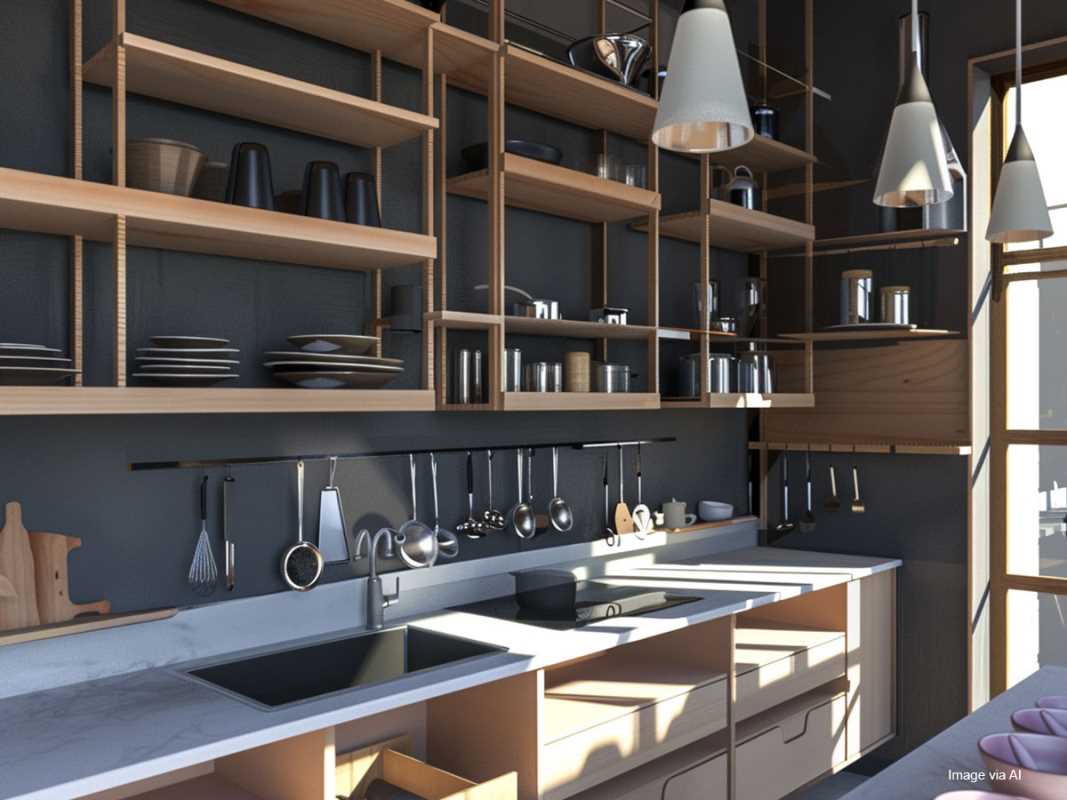When was the last time you looked in your pantry and thought, “Wow, I have everything perfectly organized?” If your answer is “never” or it’s been a while, don’t worry. You’re not alone! Whether your pantry is a single shelf or a whole closet, it can easily turn into a chaotic black hole of expired cans, forgotten snacks, and random boxes of pasta.
A clean, organized, and refreshed pantry can make your life so much easier. Not only will it save you time when meal planning or grocery shopping, but it will also help you avoid food waste and even make cooking more enjoyable. Plus, there’s something so satisfying about seeing neatly labeled jars and everything in its proper place. The good news? You don’t need to be a professional organizer or own dozens of fancy storage bins to whip your pantry into shape.
If you’re ready to transform your pantry from cluttered mess to organized oasis, grab a snack (from the pantry, of course!) and follow these simple steps.
Step 1: Empty It All Out
The very first step to organizing your pantry is to take everything out. Yes, everything. You might feel overwhelmed when you see it all spread out on the counter, but this step is key. By emptying your pantry, you’ll get a clear picture of what you actually have, which will make decluttering and organizing so much easier.
Pro tip: Lay out items by category as you pull them out, such as canned goods, snacks, baking supplies, and spices. This will help when it’s time to sort everything.
Step 2: Check Expiration Dates and Declutter
Now that your pantry is empty, it’s time to declutter. Start by checking expiration dates on everything. Toss anything that’s expired, stale, or suspicious (goodbye, mystery bag of rice from 2014). If you find items that are still good but you know you’ll never eat—for example, a box of cereal you didn’t like or ingredients for a recipe you never made—consider donating them to a local food bank.
Ask yourself these questions as you sort through your items:
- Is this still fresh and safe to eat?
- Do I actually use this regularly?
- Is it something I’ll realistically cook with or eat in the near future?
Once you’ve cleared out the expired and unwanted items, you’ll have a much better idea of what you’re working with.
Step 3: Clean Every Surface
Before you start putting things back, take a moment to clean your pantry. Use a damp cloth or an all-purpose cleaner to wipe down each shelf, and don’t forget the corners where crumbs like to hide. If your pantry has drawers, vacuum or wipe those out too. This is also a great time to add shelf liners if you want to protect the surface or make it easier to clean in the future.
Bonus tip: Keep a small handheld vacuum nearby for routine cleanups once your pantry is organized.
Step 4: Group Similar Items Together
With your pantry contents laid out and the space now clean, start grouping similar items together. Common categories include:
- Canned goods (soups, vegetables, beans, etc.)
- Dry goods (pasta, rice, grains)
- Snacks (chips, cookies, granola bars)
- Baking supplies (flour, sugar, baking powder)
- Breakfast items (cereals, oatmeal)
- Spices and seasonings
- Beverages (tea, coffee, hot chocolate)
This step will help you identify how much you have in each category and where to dedicate space in your pantry.
Step 5: Invest in Storage Solutions That Work for You
Now for the fun part—choosing storage containers to keep your pantry organized! You don’t need to buy expensive or matching bins to make it work; just focus on functionality. Here are some ideas to get you started:
- Clear Containers: Use clear bins or jars for items like pasta, rice, or baking ingredients. You’ll be able to see what’s inside at a glance, and it makes your pantry look neat and uniform.
- Lazy Susans: These rotating trays are perfect for spices, condiments, or jars. They make it much easier to find what you need without rummaging around.
- Baskets or Bins: Use baskets to corral small or oddly shaped items like snack bags or baking tools. Choose stackable bins if you’re short on shelf space.
- Can Organizers: Tiered organizers or racks designed for cans can keep them in place and easy to access.
- Door Racks: Don’t forget about the back of your pantry door! Over-the-door organizers are great for storing small items like snacks or spice packets.
If you already have a collection of mismatched containers, that’s perfectly fine, too. Repurpose what you have before buying anything new.
Step 6: Label Everything
Labels are a pantry’s best friend. They make it incredibly easy to find what you need and ensure that everyone in your household knows where things belong. You can use a label maker, pre-made stickers, or simple masking tape for labels. Make sure each container or shelf has a clear description of what belongs there.
For example:
- A jar labeled “Brown Sugar” instead of just “Sugar”
- A bin labeled “Snacks” for grab-and-go munchies
- A basket labeled “Breakfast” for cereals and oatmeal
Labels are also great for reminding you to refill containers before they run out.
Step 7: Arrange Items for Accessibility
How you arrange your pantry will make a big difference in its functionality. Place frequently used items at eye level so they’re easy to grab. Keep less-used items, like holiday baking supplies, on the top or bottom shelves.
Here’s a general rule to follow:
- Eye Level: Everyday essentials like snacks or meal staples
- Lower Shelves: Heavy items like large bags of flour or bottles
- Upper Shelves: Rarely used items or backup stock
For households with kids, create a kid-friendly zone at their eye level with snacks or items they’re allowed to grab themselves.
Step 8: Maintain Regularly
An organized pantry doesn’t stay that way on its own. Dedicate a few minutes each week to tidying up and taking inventory. Toss out expired items, wipe down shelves as needed, and ensure everything is still in its designated spot.
One tip is to do a mini-check every time you grocery shop. Restock your pantry neatly and rotate items so older ones are used first.
 (Image source: Midjourney)
(Image source: Midjourney) 





